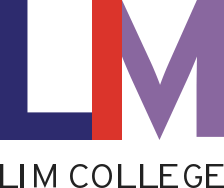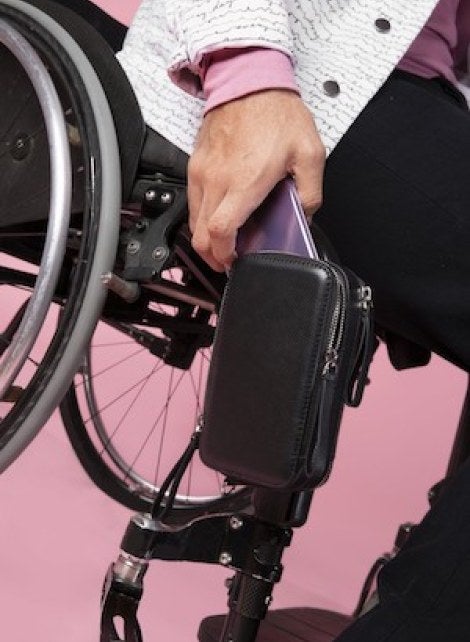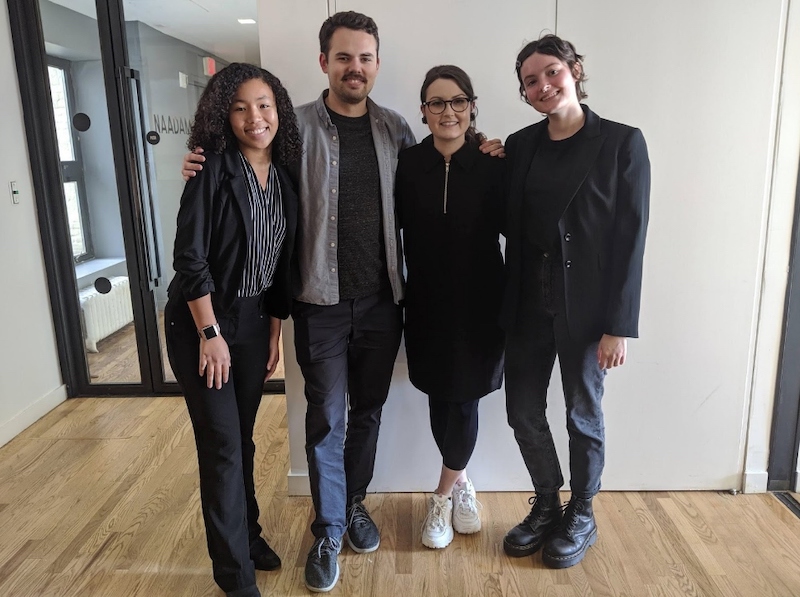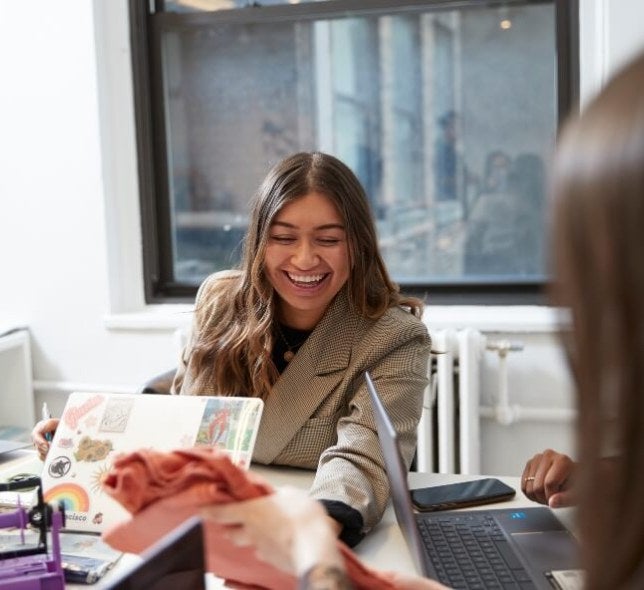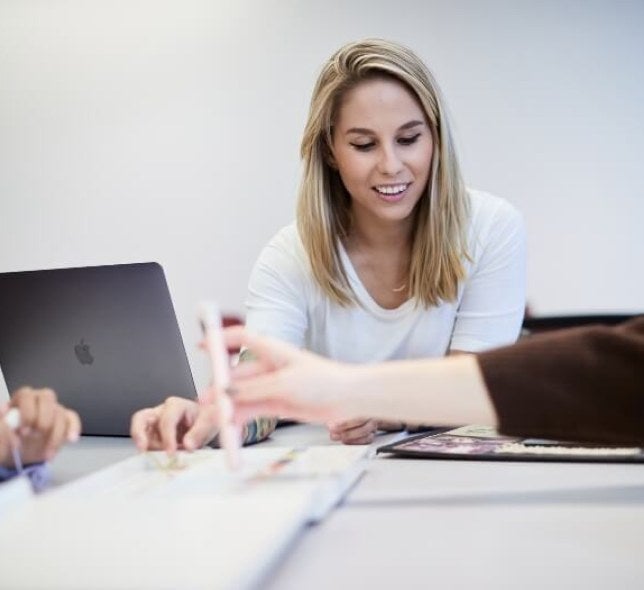This article is part of a series of interviews conducted by LIM students with winners of the Accessories Council’s 2019 Design Excellence Awards (DEA). Students are enrolled in Fashion Merchandising Professor Andrea Kennedy's Introduction to the Fashion Business class.
The suite, consisting of a bag, cup holder, and attachment system, is an accessory and lifestyle collection designed for wheelchair users but loved by all. Before FFORA, there was little to no option for functional and fashionable lifestyle accessories for use on mobility devices.
On a brisk October afternoon, we sat down with Lucy and Joonas in FFORA’s shared offices in the Flatiron District. As freshmen, this was our first time conducting an interview, and we didn’t know what to expect. Both Lucy and Joonas welcomed us warmly, giving us a quick tour of their office before finding us a conference room. The atmosphere buzzed with people around us, and we were excited to begin.
Q: Lucy, we read on the XRC Labs site that you started this company during your studies at Parsons. Can you tell us about that time and what encouraged you to want to start a company like this?
L: Here we go, Joonas. Are you ready for the spiel?
J: *Laughs*
L: I actually had no intention of starting a business, but I’ve always wanted to be a designer, and storyteller. I came to Parsons in New York. The problem, for me, was with the culture of fashion in general—it felt cyclical and repetitive. I was challenged by a professor to, “think of a design solution that would one day change the world.” I turned to a family member who has cerebral palsy, and he told me he wished clothing, and fashion in general, would address some of the issues he faced and be more accessible to him as a consumer.
Fast-forward a couple years, and I’ve been designing and working with people who have disabilities. Since it’s important not to lump all people with disabilities into one bucket and assume everything will work for everyone, my focus has been working with wheelchair users. I started focusing on the life of a wheelchair user and the needs of a seated person. There was a void at the time, and no one was really doing anything like it.
The problem with designing a business when you’ve got such specific needs and requirements is you can’t do something that works for everyone and accessories are a really good place to start. But again, there was a massive need for functional, beautiful accessories that would work for mobility devices. XRC Labs was the first point of the company, the first ambassador, and going through that program really opened my eyes because they assigned me to things that I hadn’t been exposed to as a designer, like how to think about fundraising and mentors.
Q: Did you do any specific networking to find the proper resources to start your business?
L: Yes, always, nonstop! There’s endless networking, and I think the one thing that’s constant for both Joonas and me is interacting with wheelchair manufacturers and people who traditionally might seem outside the fashion world. Really, what we’re trying to do is merge all of these different systems and fields of operation under one new umbrella, offering a new opportunity for a whole new marketspace. You have to befriend all of these people so you can leverage their expertise and, honestly, they really want to leverage our expertise, because fashion is something they know very little about. It’s like uncharted territory—it’s a really awesome opportunity.
J: You need to learn how to speak other peoples’ languages, but also explain your own design language in a way that’s not design.
L: Networking doesn’t just mean with manufacturers; it’s also networking with our customers— and that’s a whole different language—as well as networking with investors and with the fashion industry. It’s so important because we have a reputation we want to create, and new standards to set as well.
Q: What was it like starting a business at a young age?
L: Terrifying. There are so many different types of business owners, so you just have to feel what you’re comfortable with and what your non-negotiables are as well. I think having respect for everyone and being fair goes a long way, but there is no rulebook, so you’ve just got to figure it out as you go.
It’s important to surround yourself with other founders and mentors, people who have had the experience of running a businesses. You need to have a good set of resources to help you think through big decisions. It was scary, but a real privilege, and Joonas and I talk about how lucky we are to both have parents who have supported our journeys.
Q: Do you have any advice for young entrepreneurs?
J: Seek out people who are not like yourself. Young entrepreneurs can be quick to jump on the current trends of what’s making money at the moment, by recognizing there are business opportunities there. The same goes for young designers. That’s why it’s important to have people around you who think completely differently from you. Imagine business students befriending design students at school, and the businesses they could be creating together. You need to get out of your own bubble.
L: I love working with Joonas and learning about the industrial design process, such as molds and casting. Knowing all of this new information and understanding timelines while you’re working with your factory, you can really comprehend why something is taking longer to create and you can set more realistic goals. For example, you learn how to defend lengthy product development timelines and have a bit more empathy for the manufacturer and supply chain, but also how to convey to the rest of your team why something has sensitive timelines, what targets you’re meeting and why it counts.
Q: How has the feedback been from the disabled community?
J: It’s been really good. We had some fair criticism for not communicating our designs in the clearest way on our website, or people misunderstanding what’s included in a “set” of FFORA products. It’s a great learning experience.
L: Our biggest learning has been the merchandising and face value side of everything. The first image people see is very important, and when you think about it, the disabled community for so long has only really been offered items from a very functional standpoint. So we wanted to push the boundaries a little and offer what any other customer expects to see from a business.
J: Another challenge was that the product is complicated for people to understand because it’s new. Product education is everything, from how you’re pricing to what kind of photos you show and what you share on social media, and also how people are using it in real life, or how models are using it in the photos.
L: As designers, we’re always hard on ourselves and looking to improve. But in general, the feedback has been an outpouring of positivity. We never wanted to be viewed as a brand that’s capitalizing on a bandwagon, but rather that we have been doing this for a long time and have dedicated years of hard work to it. It was great to see the support we received when people could see that the product worked for them, so they could tell we had done all of the backend research.
When you start to develop a relationship with your customers, what you get is people who have fallen in love with the products, or the service, or the ethos, and are telling peers what they need to know about the product. Then, our community and brand identity enlarges. The community sharing and support within the disabled community is not something new; there has always been a rich and vibrant support for one another, and this has been really touching to witness. Let’s hope it continues.
Q: What’s the hardest part about being in the industry now? Do you feel like you’re being placed into a box by others in your field?
L: People want to label everything, as we know. For us, this brand really is in a new space—we believe we are creating a whole new opportunity. We are merging the conversation between people who are lobbying for regulations to create mobility devices, we’re leveraging industrial design skills and product design, and we’re running the brand almost like a tech company. People want to ask us what we do and it’s often hard to explain. People want to say, “Oh, so you’re a fashion brand.” The answer is, “Yes and no.”—we probably won’t have runway shows. We also hear, “Oh, so you’re an accessories company.” Well, what do you class as accessories? It’s hard, but I believe we’re broadening the language and we’re creating our own dialogue for it.
J: It’s okay to keep on figuring it out as a company. You don’t need to settle for something as your brand mission forever.
Q: How has being a woman affected you in this industry?
L: I guess this one’s for me, Joonas. *Laughs* In fashion, it’s been okay—there’s obviously a lot of women in the workforce. But there aren’t a lot of women CEO’s. Being a woman in tech has been challenging, and I’m open about this. Joonas has seen me break down a few times out of sheer frustration, and he has been so supportive when I don’t want to appear ‘weak.’ It’s tough when you see maybe one woman for every 20 men in an investment scenario, and you’re trying to talk about a fashion-related product. Furthermore, you’re sometimes pitching to people who jump to conclusions and stereotypes about the disabled community. There’s so much education involved, even at that level. However, there’s a lot more understanding, support, and opportunity than there used to be.
Q: Do you have any advice for us as we try to make it in the fashion industry?
L: Oh, this counts, Joonas. We have to be very careful—we could impact their lives. *Laughs* This is advice I would give anyone: trust your gut. That sounds obvious, but try to get in sync with it. I think the only reason I am here doing what I do today is because I have a very good gut for what to do or what not to do. You’re going to be faced with many decisions. One example for me was a job offer that would’ve given me a lot of financial security. I figured, I must be kind of bonkers not to take this job. But I felt a lingering uneasy feeling, so I walked away from it. You’ve just got to trust your gut as much as you can.
